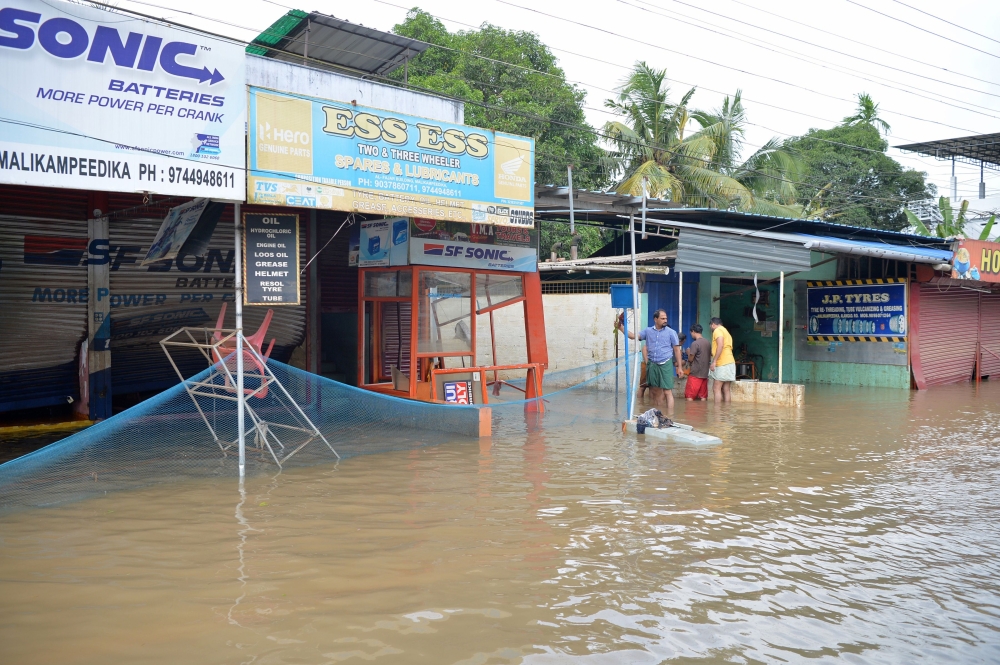At least 11 districts across the country including Patna (Bihar), Alappuzha (Kerala), and Kendrapara (Odisha), are at “very high” risk for both floods and droughts necessitating immediate interventions, claimed a report on the impact of climate change in India prepared by IIT Guwahati, IIT Mandi and the Centre for Study of Science, Technology, and Policy (CSTEP), Bengaluru.
In a significant step towards addressing climate change challenges, the report “District-Level Climate Risk Assessment for India: Mapping Flood and Drought Risks Using IPCC Framework” highlighted that at least 51 districts in India face “very high” flood risk, with 118 more categorised as “high” risk. Vulnerable regions include Assam, Bihar, Uttar Pradesh, West Bengal, Gujarat, Odisha, and Jammu and Kashmir. Another 91 districts have been identified with “very high” drought risk while 188 districts face “high” drought risk, primarily in Bihar, Assam, Jharkhand, Odisha, and Maharashtra.
Speaking during the event, Dr. Anita Gupta, Head of Scientific Divisions, DST, emphasised, “Climate change is one of the most formidable challenges of our time, impacting agriculture, livelihoods, and every aspect of life. No single entity can address this alone—it requires collective efforts and innovative frameworks. Through this report we take a significant step towards identifying vulnerabilities, assessing sensitivity, and addressing challenges faced by local communities at risk.”
51 districts in India face “very high” flood risk, with 118 more categorised as “high” risk. Vulnerable regions include Assam, Bihar, Uttar Pradesh, West Bengal, Gujarat, Odisha, and Jammu and Kashmir. Another 91 districts have been identified with “very high” drought risk while 188 districts face “high” drought risk, primarily in Bihar, Assam, Jharkhand, Odisha, and Maharashtra
Climate Risk Assessment Report
Supported by the Department of Science and Technology (DST), Government of India, and the Swiss Agency for Development and Cooperation (SDC), Embassy of Switzerland, the report provides a detailed analysis of district-level climate risks in India. Using the Intergovernmental Panel on Climate Change (IPCC) framework, the study identifies the dual challenges posed by floods and droughts and highlights their disproportionate impact on vulnerable populations. The findings underscore the urgent need for tailored, region-specific adaptation strategies to enhance resilience.
During his address, Mr. Pierre-Yves Pitteloud, Senior Regional Advisor, SDC, highlighted, “Achieving sustainable development requires a careful balance with climate resilience. For regions like the Himalayas, it is crucial to integrate climate adaptability with economic growth. With its rapid economic expansion and diverse climate challenges, India has a unique opportunity to set an example. Addressing climate change demands collective efforts on both national and global scales, along with sharing knowledge for sustainable management. The next step involves formulating actionable strategies, as we all share the responsibility of creating a greener, more sustainable future.”

This report builds on the earlier Climate Change Vulnerability Map for Himalayan States, released by the same team in 2019. Sharing his thoughts on the report, Prof. Devendra Jalihal, Director, IIT Guwahati, said, “India’s agrarian society is deeply dependent on the monsoon, making the challenges posed by climate change, such as droughts and excessive rainfall, increasingly critical. This report, a collaboration between DST, SDC, provides a comprehensive risk assessment for over 600 districts, offering invaluable insights for effective mitigation strategies.”
The study integrates climatic hazards, exposure, and vulnerability to offer a comprehensive view of district-level Speaking about the application of this report, Prof. Ravindranath, IISc Bengaluru, said, “Addressing the multifaceted challenges of climate change requires collective efforts and a deep understanding of the complexities inherent in our systems. The diverse geographical and climatic conditions across India, from the Himalayan region to the plains, present unique challenges that must be addressed with tailored, region-specific strategies.”
Addressing the multifaceted challenges of climate change requires collective efforts and a deep understanding of the complexities inherent in our systems. The diverse geographical and climatic conditions across India, from the Himalayan region to the plains, present unique challenges that must be addressed with tailored, region-specific strategies.”
Prof. Ravindranath, IISc Bengaluru
The report also emphasises capacity building at the state level, equipping climate change cells and allied departments with tools and methodologies for integrating risk assessments into their adaptation plans. Workshops and training sessions conducted as part of this study have fostered a knowledge network among state departments, academic institutions, and local stakeholders.
The findings provide actionable insights to integrate climate risk assessments into the State Action Plan on Climate Change (SAPCC). By identifying critical risk drivers, the report offers a roadmap for targeted adaptation efforts. Additionally, it highlights the importance of addressing emerging risks such as heat stress and landslides and incorporating future climate scenarios into risk assessments to bolster preparedness and resilience. The report advocates for a multi-scale, sector-specific approach to climate risk assessment and continuous capacity building at the local and regional levels.


